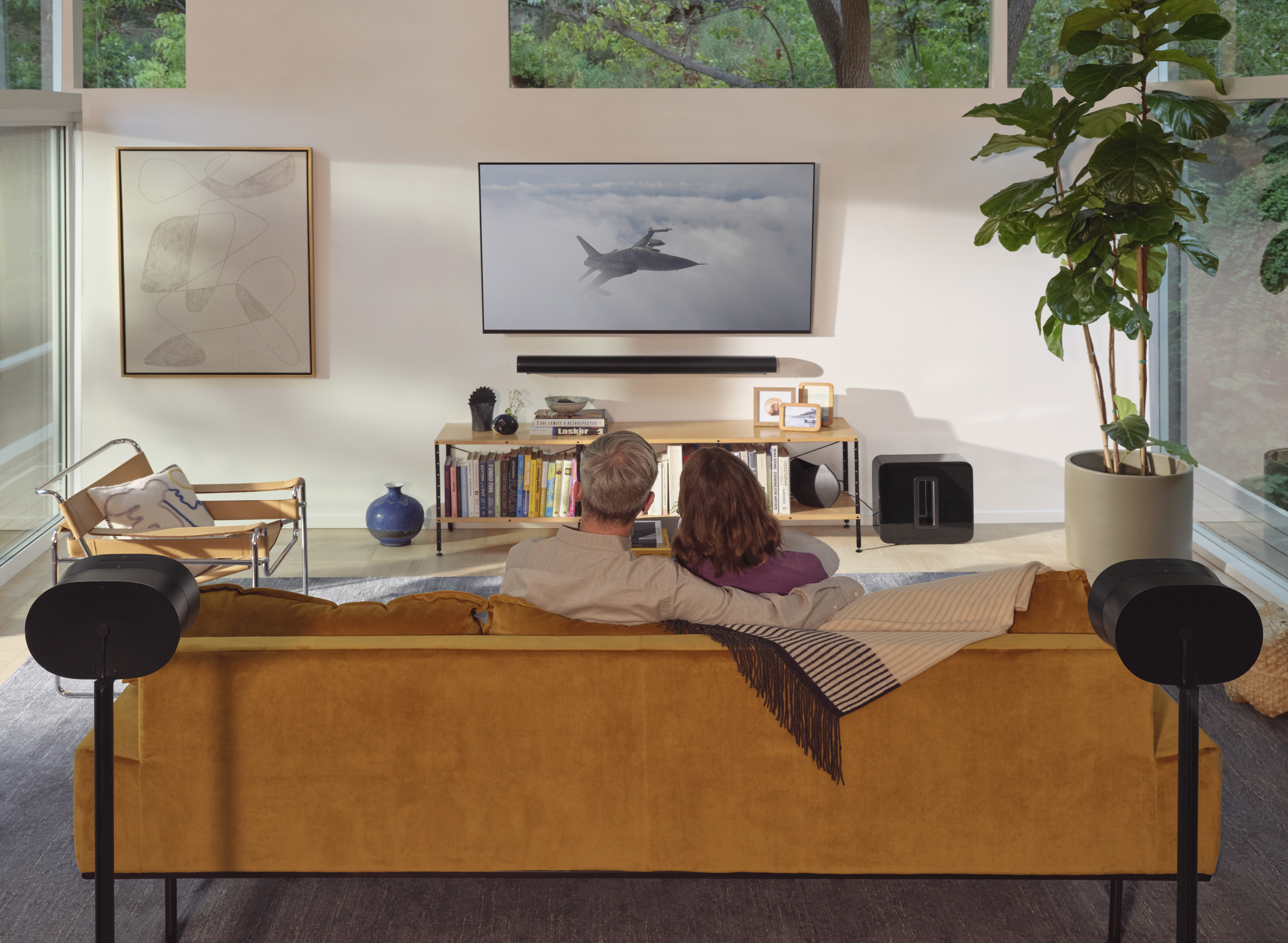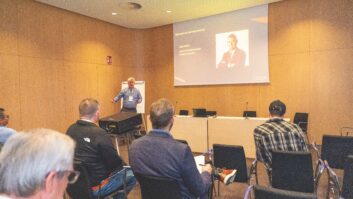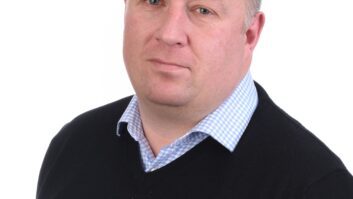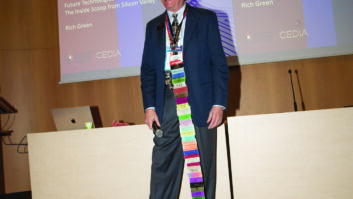Simon Croft reports on an installation where a custom installer integrated everything from security to lighting. Commissions come to integrators in variety of ways. Often itís through recommendation, or personal contact, although the first contact with a homeowner could be in a showroom, or on the phone.
In the case of the Cheshire House, it literally came out of the ether, as Geoff Banks, a director at Morban explains.
ìIt came via the main building contractor, who found us on the internet,î he says of the first contact with Hemlock Construction. ìIt was their first real push into the realms of intelligent building and used us basically as a subcontractor, along with the main electrician for the electrics.î
The house under construction was a Ä/£5m, seven-bedroom property beside a lake and a private golf course in especially lovely part of Cheshire, England. The area is home to a number of actors, as well internationally known sportsmen.
Neo-Georgian in style, the house itself is an imposing masterpiece in redbrick and white render.
ìItís a beautiful house,î Banks affirms. ìAs you enter the property thereís a very large reception area with an open staircase and a gallery for two floors above it. There are three massive Italian designer lights ñ chandeliers ñ hanging from, it must be 35ft up in the air.î
The owner was apparently looking for a single relationship rather than multiple sub-contractors for design, supply and install of their lighting control, security, audio visual and home network systems ñ which explains Morbanís unusually wide remit, as well as its suitability for this project. Before looking at how Morban established and met the brief, itís useful to know something about the company itself.
Banks and technical director Gary Morgan are both ex-Hewlett Packard, where Banks learned how to secure sponsorship from high level corporate clients and Morgan cut his teeth on mission-critical IT solutions for sports events, including Formula One and the World Cup in 1998.
The company was only established in 2005 but has already gained an impressive range of commercial and residential contracts, with residential forming 55-60% of Morbanís business. ìWe can work with anything as small as a single room ñ a lounge ñ up to the Hilton Hotel in Liverpool,î says Banks. ìFrom housing associations up to £5m; from assisted living for disabled people, to houses that are used occasionally as holiday homes ñ we operate as far a field as Malta now.î
As we will see, the background of Morbanís founders has influenced its approach to intelligent home technology. In fact, the two spent an entire year researching the available automation products before Morban began to actively market itself. So, this is about far more than ëIT versus AVí.
ìBecause we were from the support organisation within Hewlett Packard, everything we do is about support ñ everything,î Banks emphasises. ìItís what we live and breath. If we canít support something properly, we wonít take it on.î
Morbanís other USP is the sheer diversity of technologies it can deliver to the customer. ìOur bid to every one of our customers is that we take disciplines of security, lighting, lighting control, lighting design ñ we do heating control as well now ñ networking, AV, away from all these different subcontractors and do it all ourselves via our installers,î says Banks, adding, ìand because we use an installer network, it keeps the costs down.î
Suffice to say, owner and builder were also looking for the integratorís recommendations, this is turn requiring Morban to analyse the clientís needs. Feeling secure in a large family house in a countryside setting was a key consideration and Morban chose the Comfort Intelligent Home System from Cytech Europe as a central component for this, along with Dynalite throughout.
The Comfort system not only provides a high specification intruder alarm but also links to the Dynalite lighting and device control allowing ëday modeí, ënight modeí and various ëaway modeí settings that not only provide complete and secure protection but also ensure that systems not required are turned off ñ such as lighting and the entertainment system.
ì[The owner] has a place in Spain, so when she lands she can switch the house on remotely,î Banks explains. ìSo everything you could need to control, really, everything you can think of, itís there.î This even extends to setting the sauna via mobile phone, so that it is ready for use on arrival.
Returning to the security aspects, the system also feeds images from the gate, the outside and inside CCTV cameras to a specific TV channel that can be viewed throughout the property such as the TV in the kitchen.
Views around the house can be accessed from a remote computer and mobile, or phone, and these can arm or disarm the security system. Control of the gates and the front door can also be operated remotely, or from the LCD keypads inside the house. If no one is home, the doorphone is programmed to connect to a computer or mobile for a conversation with the visitor or delivery man, who can be let in.
In the event of an alarm, Comfort can dial out to a list of eight phone numbers. A voice message is sent to phones stating what has occurred and where.
ìWeíre using that Comfort system to its maximum,î says Banks, who is enthusiastic about the power of remote control available through the Comfort/Dynalite combination.
ìOh yeah. You can do flood monitoring, you know, leak control. You can connect anything to it, so you can monitor your heat.î Banks uses the system himself, to monitor the output of the solar panels at home and to check the wood pellet boiler.
In the Cheshire House, the Comfort system interfaces with Dynalite lighting control equipment like the LCD touch panel at the entry to control lighting, heating, gate and security systems. Lighting controls provide a spectacular range of mood lighting, as well as task lighting, plus dimming of LED and Halogen light fittings.
There are elegant multi-function Revolution wall panels that provide single touch lighting, heating, air conditioning and AV control, plus infrared remote control of selected areas such as the living room and bedrooms.
Universal sensors automatically light a pathway down stairs or corridors at night and switch off when there is no movement detected for a few moments. There is also emergency pathway lighting during any alarm situation.
ìIf the client gets up in the night, it switches the pathway lighting on to show the way to the loo, so youíre not going to stub your toe,î Banks explains. ìIf itís in night mode and the guest bedroomís PIR springs into life, because it knows somebodyís moved, itíll switch on the light to the kitchen, for instance, or disarm the Comfort system, so the person can get downstairs, have a drink of water and get back upstairs without the alarm going off.î
There are two ìfun areasî in the house: one is the attic on the second floor, where there is a home cinema in the roof space, the other is the basement, where the spa area is found. This contains a spa pool, training equipment, a wet room and that remotely addressable sauna. Morbanís expertise with lighting is very much to the fore in this area: RGB colour changes illuminate the spa with a stunning range of effects and moods.
There are 40 separate multi-purpose Cat8 data points around the house to distribute satellite TV, Sky HD, phones and internet as well as terrestrial TV and radio. The MediaX networking system allows for minimal wall plates providing connection for up to eight different devices, replacing the multiple wall plates required where Cat5 is used. Its high-performance, high bandwidth cable also enables HD distribution from that same single cable. This provides a very flexible, powerful and wall clutter free alternative to the commonly used Cat5.
ìThe difference between Cat8 and Cat5 isnít just three ñ itís a whole different concept,î enthuses Banks. He admits that it is more expensive and more difficult to install than Cat5 but is evangelical about the advantages. ìOnce itís in, itís very versatile. It lowers the wall acne – you can have eight different services connected through a single gang panel, whereas the maximum you can have with a Cat5 is two. And the bandwidth is much wider, so you can send HD down it. You can do a lot of things with it you couldnít do with Cat5.î
The HD compatibility alone could mitigate the higher price of Cat8 compared to Cat5 in same installations. According to Banks, it is more difficult to terminate, so electricians who are comfortable working with Cat5 may find themselves faced with a learning curve. Itís greater diameter and rigidity mean that tight bends are out of the question ñ and the best place for cable runs is voids such as loft spaces, where possible.
Many of the solutions Morban brings to its clients were discovered during the year of research before the company started trading. ìGary came up with what I think is a very robust range of systems,î Banks offers. ìComfort ñ which is the worldís best kept secret ñ and Dynalite, which constantly outstrips [a major brand competitor].
ìWeíre not system specific,î Banks emphasises. Weíre open system orientated, and thatís probably from our HP days, to be honest. I always believe you offer a better service when youíre not linked directly to one hardware supplier. We have a raft of different products that we glue together.î
Banks says that Morban ìvery keenî on products supporting KNX, adding ìthe quicker we move to that, the betterî.
But he cautions against adopting any product or scheme unless itís certain to work.
ìWe only implement systems when weíre absolutely confident that theyíre bullet proof. And we couldnít install anything into The Hilton, for instance, unless we know it was going to be absolutely simple to maintain.
ìWe keep being reminded when we meet commercial clients, that the people who are going to control these systems are not PhD level operators, so everything has to be very simple. And that trickles down, whatever we learn commercially, we trickle it down residentially.î
This brings us to key areas of a CIís expertise that are seldom examined in depth: the ability to find out what a prospective client really wants, to develop a proposal and to present it in such a way that the client feels confident in going ahead. Banks says he believes that working in the commercial and residential sectors has helped Morban to understand these processes more fully.
ìAbsolutely I do, yes,î he affirms. ìResidentially, you make a decision on the system based on the emotional side. Commercially, you make a business decision based on what the system will cost and the return. And, you know, youíre dealing with two completely separate approaches to a system.
ìQuite often what weíre providing is the most expensive part of any project from a residential point of view,î Banks points out. ìSo you have to get it right, and you have to listen to the emotions, and you have to do what the client want. You canít force things on people ñ youíre not just supplying white goods, youíre supplying something to meet the idea in the clientís mind.î
None of this happens, of course, without that initial contact with the client. ìTheyíll contact us via various means,î says Banks, ìvia our website, us going to a show, or via word of mouth ñ which is growing nicely, as the base increases.
Having taken on board the clientís requirements, Morban generally bases its estimates on first fix and second fix with the option to use its installers for the first fix.
ìIt can be as little as lighting design on itís own; it can be as large as everything,î says Banks. ìIt varies from client to client. Some want just a wiring loom; they want their cabling in for the future if they go to HD. Some want to integrate their own audio systems that theyíve had for years. We can do that. Itís about listening as much as selling.î
In the case of the Cheshire House, it was clearly the client who dictated the final installation.
ìThe interior design was very important for the client, and certainly the lighting designer on that sideÖ some of the light fittings are fantastic, and very much the taste of the owner. This house was built around what the owner wanted ñ it wasnít built by a developer, or a builder, that forced some of the ideas onto the client. The owner had a hands-on approach in every aspect of it.
Then there is the question of that all-important first meeting. ìWe met with the client at one of our commercial restaurants that weíve done,î Banks recalls. ìWe showed them the Dynalite system, showed them the audio system, showed themÖ in fact they were amazed that the whole audio system ran from a single iPod dock, which was quite interesting. And thatís when they fell in love with Morban, basically.î







